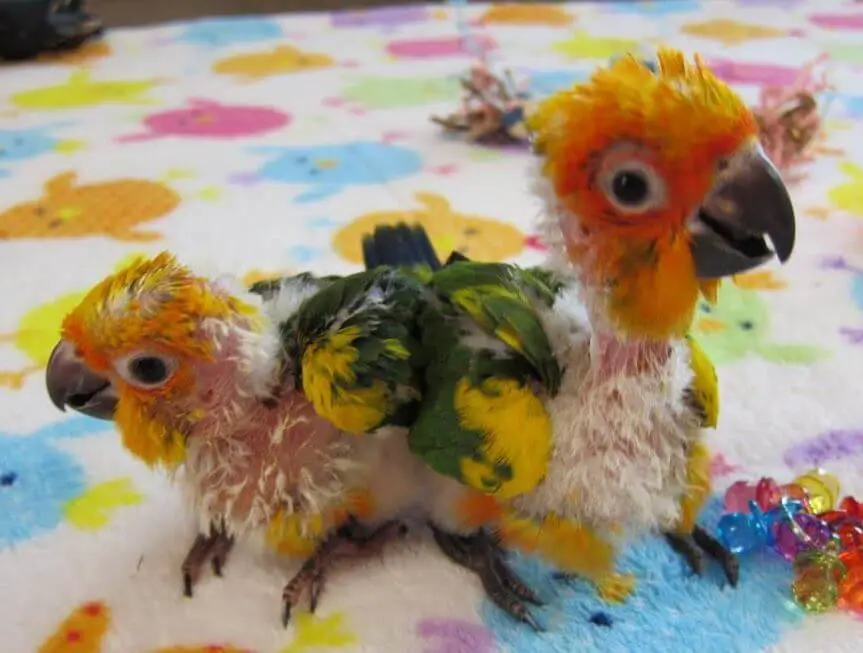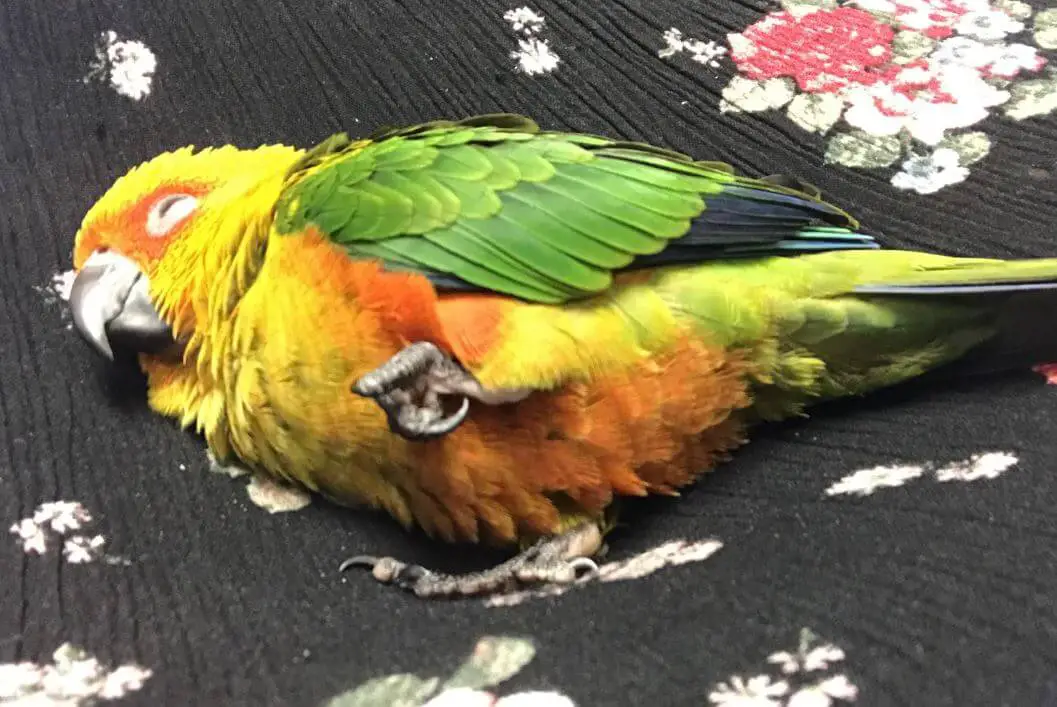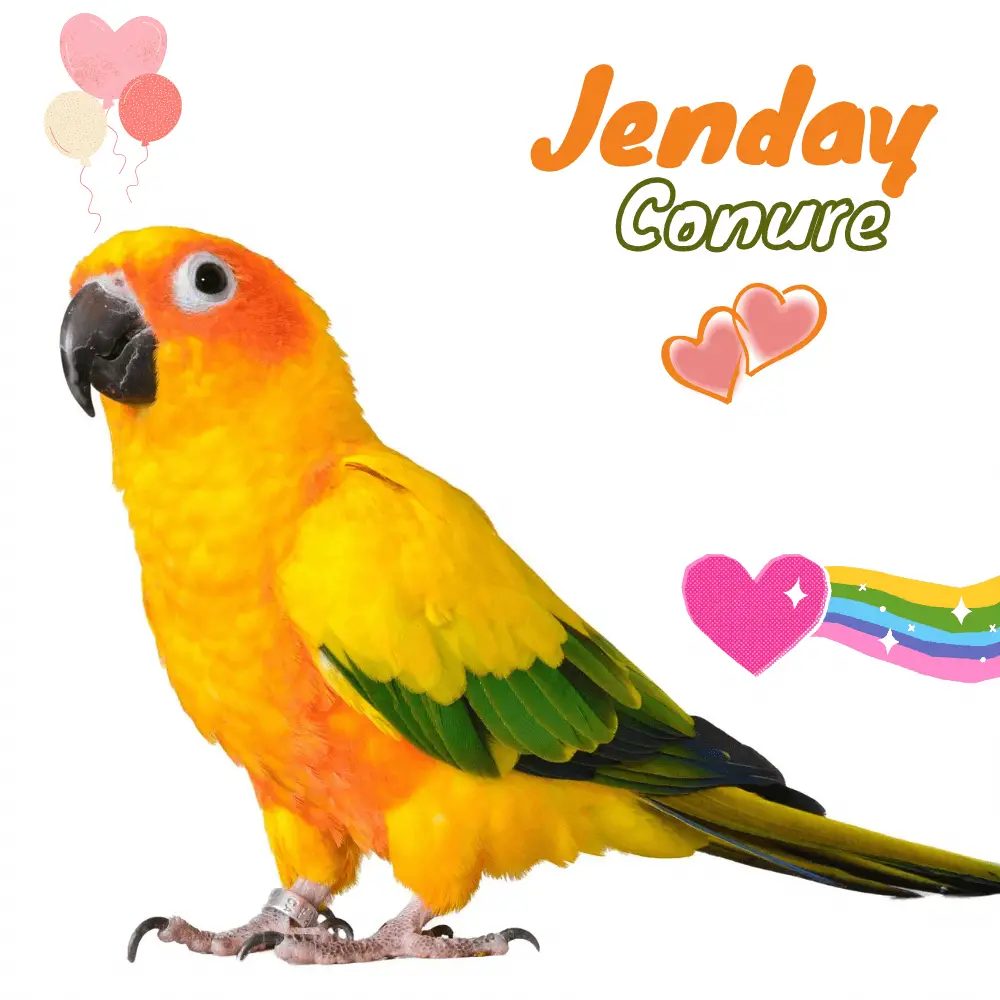Jenday Conure: ( Aratinga jandaya ) 23 is a species of medium-sized bird in the parrot or parrot family (Psittacidae). It inhabits the forested areas of northeastern Brazil.
It was discovered by the German naturalist Johann Friedrich Gmelin in 1788.
Description
Although physically similar to the Sun Parrot ( Aratinga solstitialis ), the Jandaya Parrot can be differentiated by its entirely green plumage on the wings and upper tail, in contrast to the yellow feathers of the Aratinga solstitialis.
The legs and bill of this bird are dark grayish, and its eyes are black, surrounded by a white circle ( periocular ring ).
It does not possess sexual dimorphism, so it is difficult to tell the female from the male with the naked eye.
Some researchers have pointed out that the head of the female is smaller than that of the male, but this has not been verified by reliable studies.
The song of the Jenday Conure is very loud and high-pitched. It does not have the high pitch of the Sun Parrot’s call.
Meet And Greet: Ecuador the Jenday Conure
SOURCE: Animal Wonders Montana
jenday conure size
The jenday parakeet reaches a size of 30 centimeters. The Jenday Conure is a medium-sized parrot with a long tail. Its head, neck, and belly are orange-yellow, and its tail is green, with blue and yellow feathers.
jenday conure vs sun conure
jenday conure: The upper breast is orange. The front forehead and often the area around the eyes are red. Belly, flanks, and under wing-coverts are orange-red.
The outer flags of the primaries, the palms, and the secondaries are blue.
The top of the tail is olive green with blue tips, and the underside of the tail and the primaries and primaries are black.
The beak is black, the feet are grey. In juvenile birds, the head is light yellow with scattered green feathers. The iris is dark.
sun conure: The 30 cm long Sun Conure is usually colored yellow, orange, and red, the wings and tail are green, shimmering slightly dark blue.
The plumage of the young birds is initially green-yellow interspersed, the full coloring takes place at about 9 months.
The shrill, two-syllable call is often uttered in trees or in flight. The flight is fast and straight. The average life expectancy of a Sun Conure is around 20-30 years.
Jenday Conure Reproduction

The Jenday Conure nests in three holes, usually in a location that is at least 15 meters above the ground.
In captivity, the female lays between 3 and 6 eggs, which she will have to incubate for the next 26 days, approximately.
Both parents feed the chicks until they are ready to fend for themselves, at 2 months of age.
Jenday Conure Food
It feeds on seeds (both germinated and closed), fruits, vegetables, nuts and porotos (beans). In captivity can eat cooked brown rice and even pasta.
Chocolate, caffeine and avocado (avocado) are toxic and can cause from great physical difficulties to death.
Aviculture

This species can live more than thirty years in captivity.
Like several species of parrots that can be kept as pets, Jandaya parrots are noted for their sweet, sociable disposition and playful nature;
In addition, they have a great ability to learn new tricks and are suitable animals to live with children.
They are highly intelligent birds and can learn various words and phrases, although they are not known for their speaking ability.
These birds need to have entertainment and interaction with their human peers if they are in captivity. They can suffer from various diseases, such as loss of feathers or ailments typical of parrots.
Habitat
Two jenday conure (middle) and a sun conure in captivity
The jenday parakeet inhabits the tree-covered Caatinga steppe, cleared areas and the fringes of rainforests and coconut palm plantations.
Way of life
Little has been researched about its way of life in the wild. It is usually seen singly, in pairs, and in small flocks of 10 to 15 birds.
He is not shy and his screeching makes him very noticeable. Its flight is swift and direct. He often flies close to the ground and suddenly changes direction.
Its call is very shrill, especially during flight. The breeding is probably between October and January. The eggs measure 28.4 × 22.6 mm.
Jenday conure breeding
SOURCE: Kailee Chiko
Conservation Status
The population size of the jenday parakeet is unknown. It is fairly common, but subpopulation sizes are inconsistent.
Although the habitat is expanding due to deforestation, the population is declining in some areas due to the illegal animal trade. The IUCN classifies it as Least Concern.

